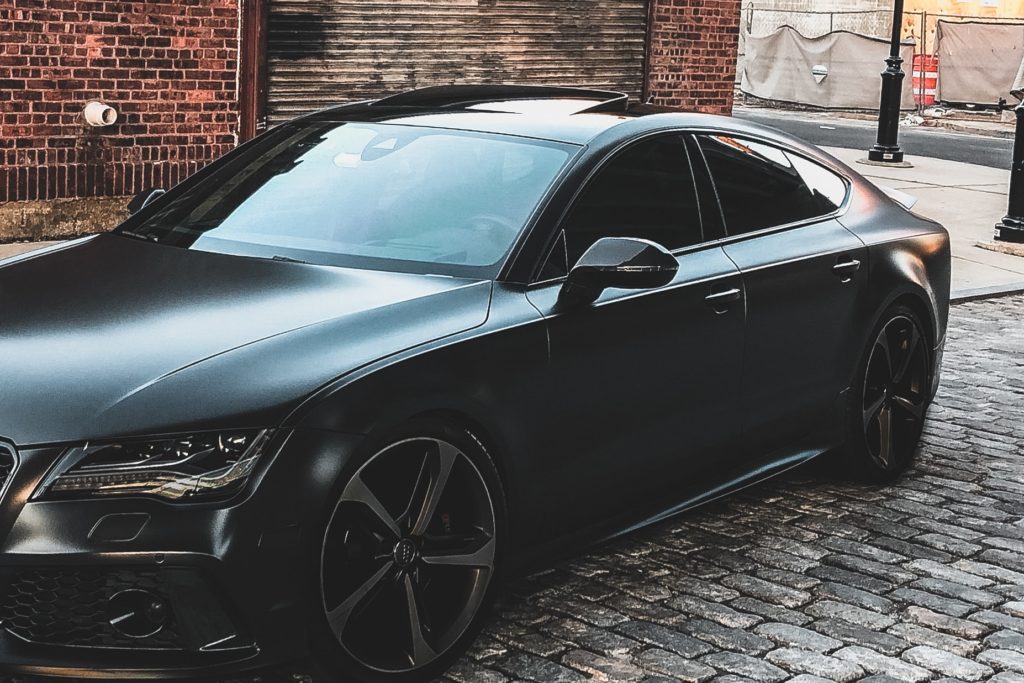Tinted windows can look amazing. They can help to reduce glare from sunlight, and they can even help prevent theft.

But there are laws surrounding tinted windows. So to help you enjoy the benefits without incurring a penalty, let’s take a look at what the law has to say about this issue.
What Are Tinted Windows?
They’re windows that have been in some way darkened, or tinted with colour. They can add a bit of extra security to your car, as it makes it harder for would-be criminals to look in and see what valuables you might have.
And as we said above, they can help to reduce glare from sunlight. But some people like tinted windows just because they look good. Some believe they give cars a sleek, cool, professional appearance.
Window Tinting Modifications
Some car models come fitted with tinted windows as standard. But it’s also possible to tint your own windows after you’ve bought your car.
You can do this by visiting a third party to do it for you. They could fit your car with entirely new tinted glass. Alternatively, you can buy your own window tinting kit.
You’ll get a roll of tinted adhesive plastic which you must place over your windows. This plastic can be pre-cut to fit your car, or you might have to cut it yourself.
There are many varieties of window tints available. Some will be higher quality than others. More importantly, some will be much darker than others. And it’s here where you need to take care.
Window Tinting Law UK
The law applies to your front windscreen and your front side windows, and the rules depend on when your vehicle was first used.
If your car was first used on 1 April 1985 or later, your front windscreen must let at least 75% of light through, and your side windows must let at least 70% of light through.
If your car was first used before 1 April 1985, both your front windscreen and side windows must each let at least 70% of light through.
If you’re buying and fitting your own window tints, the manufacturer should specify how much tint their material provides.
For example, a material with 5% tint will still let 95% of the light through, so you can legally fit this to your front windscreen and front side windows. Similarly, if you’re getting your windows tinted by a third party, you should check in advance that their modifications won’t breach the legal limits for legal tinting.
There are no laws concerning the tinting of your rear windscreen, or your rear passenger windows.
Penalties for Wrongly Tinted Windows
If your windows look too tinted, you might get pulled over. The police have light-measuring equipment to measure window tint. And if they find your windscreen or front side windows are tinted too much, you could get a penalty.
At best, you’ll get a prohibition notice. This will stop you from using your car on the road until you’ve had the extra tint removed. But you could also receive a penalty notice, or even a court summons.
So never tint your windows more than you’re legally allowed. Like with all things road safety, it’s just not worth the risk.
Tinted Windows and Car Insurance
If your car comes fitted with tinted windows as standard, you might make a saving on your car insurance. This is mainly because tinted windows can help to reduce theft, as it makes it harder to see inside your car.
Tinted windows can also help with road safety. If you’re involved in an accident, the plastic film used to tint the windows can help to keep the glass in one piece. This will reduce both damage to your car, and potential injury to you and your passengers.
On the other hand, tinted windows might cause the cost of your insurance to rise – particularly if you tint them yourself. This is because they’re classed as a car modification. And like most car modifications, they’ll cost a lot to repair if you’re ever involved in an accident. Be sure to tell your insurer if your windows are tinted as an aftermarket modification.
For more information about how tinted windows might affect your insurance, please check your policy wording.



